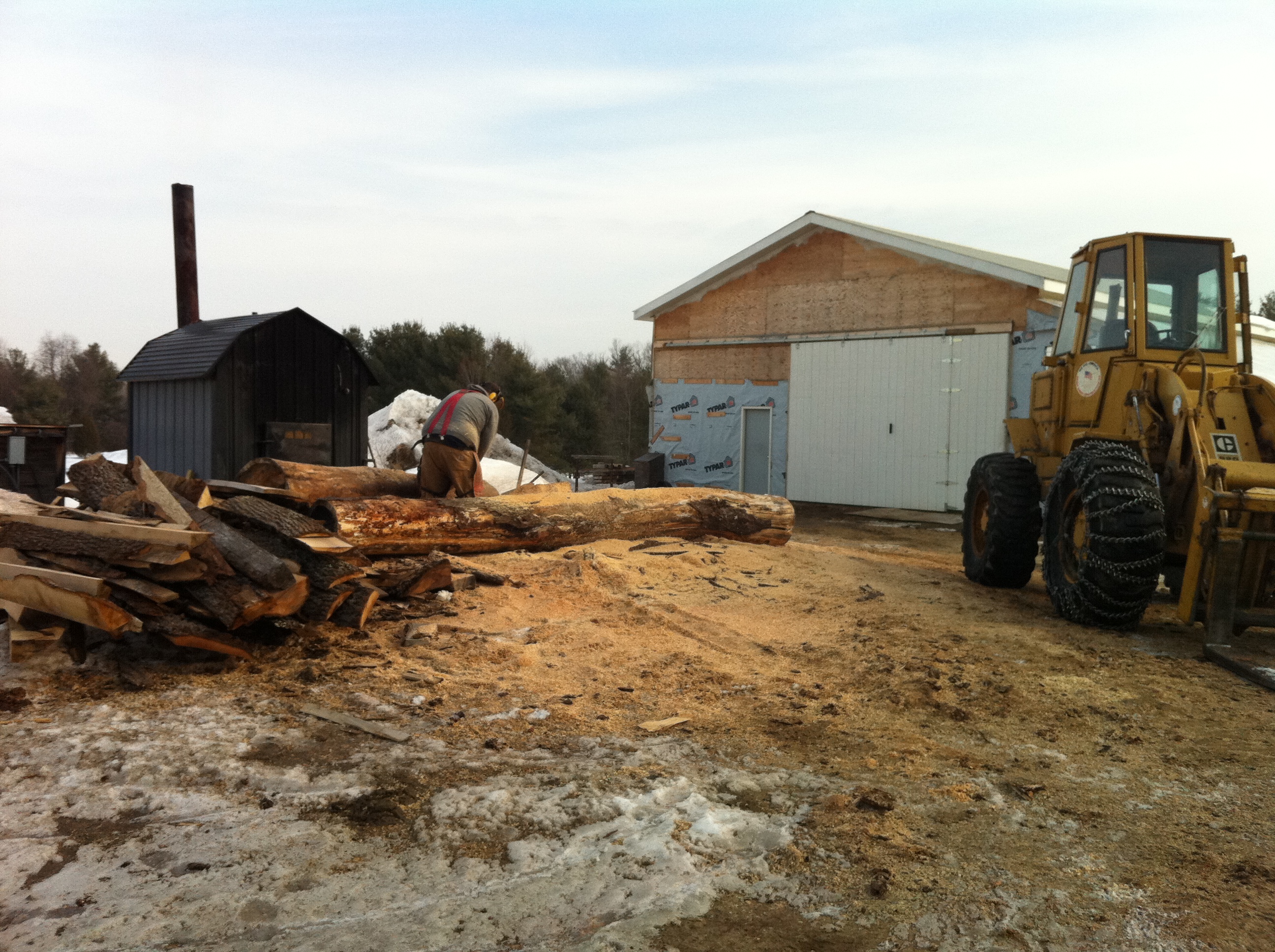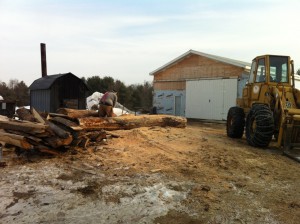One of the great things about my job is that I have an excuse to go to Berkshire Products a couple times a year. It’s a trek (did you know that you can drive almost 4 hours and still be in Massachusetts?), but always amazing.
This place mills massive trees. This is where the table and counters come from.
Alongside the oak and maple from Maine, and the cherry from New Hampshire, there are giant boards that say things like “old growth redwood.” They are amazing, but I had that same sort of feeling I had when I was a kid at the Natural History Museum. You almost want to touch the stuffed animals, but you’re also thinking about this majestic life that was brought to a quick end.
In the past I haven’t wanted to askabout the redwood, the English Elm, and the other old growth. Not sure I wanted to know. But this trip I pushed past that and asked some specific questions. The answers surprised me. The redwood? When they clearcut redwood in the first half of this century they left 6 foot stumps and logs on the forest floor. Redwood is sort of like Cedar, so it doesn’t really rot, other than the sapwood. So people are going back now and cleaning up these forests. And that’s where the old growth redwood is coming from. Pretty interesting, hunh?
And the English Elm? Elm used to be everywhere. It was the most popular ornamental tree in the 1800s and early 1900s. It was a “boulevard” tree and was found everywhere. People loved the “habit,” which is what they call the shape the tree grows into. Then this nasty disease came along, Dutch Elm. Some Elm survived the first few rounds, then came a more virulent strain around WWII, around the same time the nurseries responsible to developing cultivars were destroyed in Germany. Anyway, it was a dark day for the Elm. Many were cut down. Out on the West Coast they were spiked and treated to hold off the disease. But the treatment wasn’t a cure, and 40 years later (now) the trees are being cut down.
The guy at Berkshire Products told me that many of their trees are “Urban Cuts.” He said, for good or bad, the trees are cut in urban environments. He doesn’t tag them or ask for them or anything, but sort of scavenges what is available. Funny, this place way out in the middle or nowhere, as rural as you get in Massachusetts, and they get their trees from cities.



